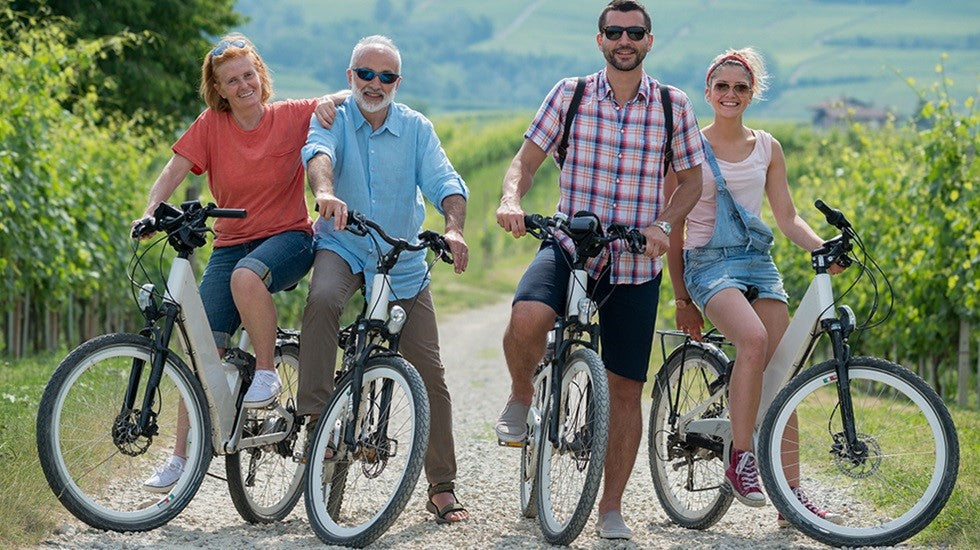
Electric bikes have surged in popularity in urban areas as easy, reliable, and inexpensive forms of transportation for city dwellers. As more people adopt Ebikes into their daily routines, curiosity about whether an electric bike can also serve as a mountain bike has become prominent among riders. While many electric bikes can handle the unique stresses of mountain trails, including specially designed electric mountain bikes, Ebikes have created controversy and have even faced rules against their use in some popular state and national parks.
The debate over Ebike use on mountain biking trails is complex, and both sides put forth valid arguments. As more people consider the distinct advantages of riding Ebikes from companies like FLX Bike, the question of where they are allowed outside of cities takes on more importance to everyday riders.
Since 2013, the United States Forest Service (USFS) has classified electric bikes as motorized vehicles. This classification means that electric bikes are not allowed on mountain trails in some national parks. However, the USFS has also tested alternative policies for Ebikes, including allowing them on California's Mammoth Mountain trails. While some national parks are off limits, there are still thousands of trails across the country open to Ebike riders. Websites like https://peopleforbikes.org/emtb/ allow you to search your area for trails that allow Ebikes.

Right now, many states including Colorado, Utah, and Washington are debating their own laws and policies for electric bikes, which could result in Ebikes being allowed on even more trails. This is similar to the way policies developed around snowboards as they rose to popularity in the 1980s and 1990s.
Many skiers did not want snowboarders on their mountains, and snowboard approvals were often determined state-by-state until snowboarding became accepted as a normal activity. Skiers and snowboarders now share most mountains without controversy.

Advocates for electric bike riders point out that allowing Ebikes on mountain trails opens up the hobby of trail riding to many people who may not have been able to participate before, including people with lower fitness levels, elderly riders, and people who have physical disabilities. These advocates clearly respect the unique mental and physical benefits of trail riding and want these experiences to be available to a wider variety of people than traditional mountain bikes can facilitate.
Additionally, proponents of electric bikes point out that while these bikes are partially motorized, they still offer many of the same health benefits of pedal-powered bikes. Many people refer to electric bikes as electric-assisted bikes since human effort is still required to move the pedals. Movement of the pedals initiates electric assistance systems that make continued movement on the bike easier, especially uphill.
Assistance modes on Ebikes can also be turned off if the rider can handle the terrain alone, which makes Ebikes more versatile than non-electric mountain bikes and means that they can still function as normal bikes even in the event of a power failure.

The benefits of trail riding itself aren't in dispute between the two sides of the Ebike debate, but opponents of electric bikes on public trails raise safety and culture concerns. Safety is primarily an issue when electric and pedal-powered bikes share a narrow mountain trail and may be moving at very different speeds.
Because of their design, Ebikes tend to have an easier time maintaining a steady, fast-paced ride, while pedal-powered bikes frequently change speed based on the difficulty of the terrain. This could result in pedal-powered riders slowing down at harder parts of a trail while Ebike riders maintain their speed, creating the possibility of serious crashes.

Many mountain bikers also treat riding not as a hobby, but a sport. In their view, allowing electric assistance undermines the qualities of trail riding as an activity that tests individual human endurance. Ebikes, in this view, significantly change the culture of mountain riding, its norms for polite riding, and the people involved in the sport.
It is good to remember, however, that many advocates of Ebikes are themselves former mountain bike riders who have had to leave the activity due to age or physical changes. Ebikes may also assist not only those who are older and have had to abandon the hobby, but those who are too young to power mountain bikes on difficult trails, such as children riding along with their parents, thus introducing new people to the sport.
With the popularity of Ebikes growing, more and more riders will be looking for trails they can access. The controversy over which trails Electric Bikes can access will undoubtedly go on, but it seems that as more people purchase Ebikes in the US, more trails will start opening up as well.





Share:
Can you get fit riding an electric bike?
ANNOUNCEMENT: This thing is completely nuts!